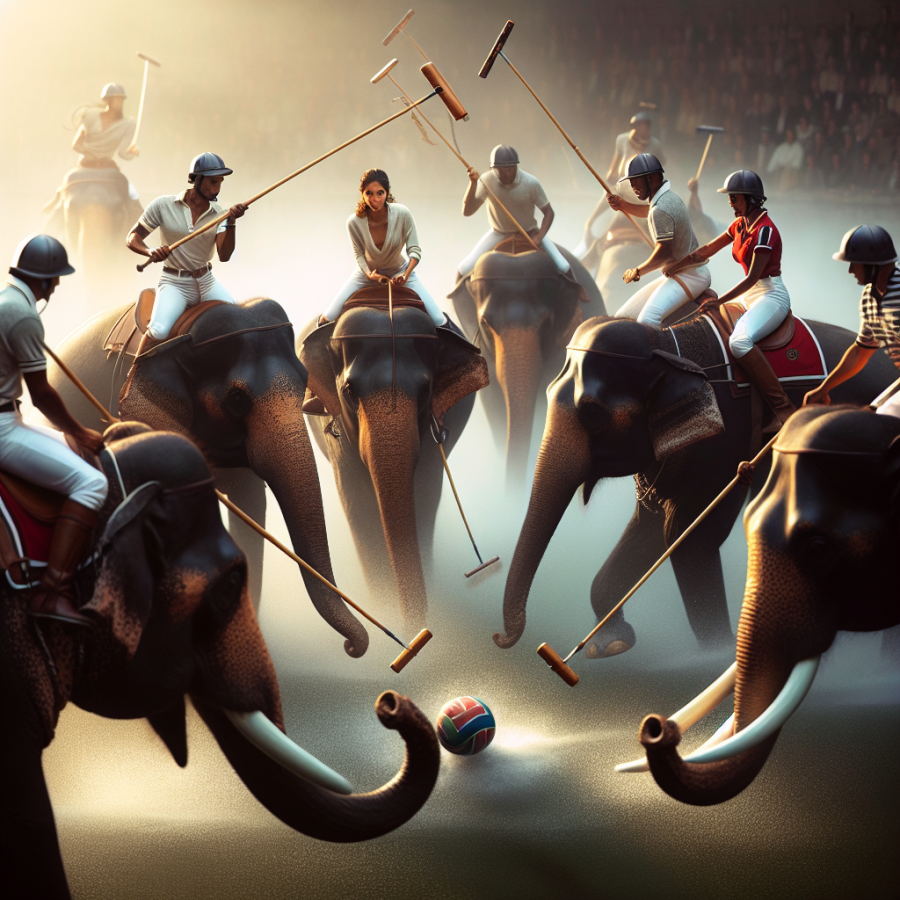Tracing the History of Elephant Polo: A Regal Sport
Elephant polo, an intriguing and somewhat lesser-known sport, exudes a blend of exotism and nobility that captures the imaginations of those who encounter it. This majestic game, juxtaposing the grandeur of elephants against the competitive spirit of polo, boasts a history that is as rich and colorful as the pageantry surrounding its matches.
The game's aristocratic lineage can be traced back to the early parts of the 20th century when British aristocrats and tea plantation owners in India sought new leisure pursuits. Elephant polo is said to have originated from the mahouts (elephant drivers) who, for fun, would play a casual game of polo using elephants instead of horses. The official rules, however, were established much later, giving the sport a formal structure and international recognition.
It was in the 1980s when elephant polo truly claimed a distinct identity, primarily thanks to the inception of the World Elephant Polo Association. This organization was founded by two intrepid sportsmen, Jim Edwards and James Manclark, who channeled their passion for adventure and polo into creating a formal set of rules for elephant polo. Their infatuation with the game resulted in the inaugural World Elephant Polo Tournament, played in the terai of Nepal, close to the Indian border, on a grass airstrip that belonged to Tiger Tops Jungle Lodge.
The sport continued to gain popularity among the elites and adventure-seekers and saw the establishment of annual tournaments which attracted international attention. Traditionally, the polo elephants were trained for their roles, learning to navigate the field to the commands of their mahouts, while the players focused on hitting the ball with elongated polo sticks, ensuring their own balance and the well-being of the animals.
Throughout its history, the sport has necessarily evolved, continually refining regulations to enhance the safety and welfare of the elephants. Welfare groups and animal rights organizations have expressed concerns over the use of the giant mammals in the sport, leading to stricter guidelines and careful monitoring of the elephants' health, diet, and overall care.
Aside from Nepal, elephant polo has found footing in various other locales, including Thailand and Sri Lanka, where it draws in crowds for charity events, raising significant funds for the conservation of Asian elephants, which are suffering from habitat loss and other human-related pressures.
Read also:
Virtual Playgrounds: The Rise of Sports Video Gaming
Understanding the Rules and Techniques Behind the Game of Elephant Polo
Elephant polo is a variant of the traditional game of polo which replaces horses with elephants. While it may sound humorous or whimsical to some, it is a sport taken quite seriously by its players and has a set of rules and techniques that are unique to its execution.
The gameplay of elephant polo is similar to traditional polo, which involves two teams attempting to score goals by hitting a small ball into the opposing team’s net using long-handled mallets. In elephant polo, however, the elephants are ridden by two people: a mahout, or elephant driver, and a player who is responsible for hitting the ball. The mahouts steer the elephants while the players focus on the game.
One of the most critical rules in elephant polo is the welfare of the elephants. The elephants used in the game are generally trained and are accustomed to the presence of humans and the experiences surrounding the game. Strict guidelines ensure that the animals are treated humanely, not overworked, and adequately cared for before, during, and after matches. Game durations are typically shorter compared to horse polo to ensure the elephants do not become overtired.
In terms of the field, it is smaller in elephant polo, often half the size of a traditional polo field. This is in consideration of the elephants' speed and mobility. The smaller field size makes the game more compact and spectators can have a closer view of the action.
The equipment used in elephant polo has also been adapted. The mallets used are much longer than those in traditional polo, sometimes up to two meters in length to enable players to reach the ball from atop their high mounts. The ball is often larger and lighter than a standard polo ball to allow for easier hits and better visibility.
Due to the size and nature of the elephants, the pace of the game is much slower compared to horse polo. This requires players to strategize differently, emphasizing precision and timing over speed and agility. Communicating effectively with both the mahout and the elephant is crucial, as is a deep understanding of the elephant's behavior and capabilities on the field.
The elephants themselves also employ techniques that may differ from their equine counterparts. They can kick the ball with their feet or even with their trunks, although use of the trunk may be limited by specific game rules. Coordination between the elephant and the player is essential, and players must have a good sense of spatial awareness and the ability to predict the movement of such a large teammate.




